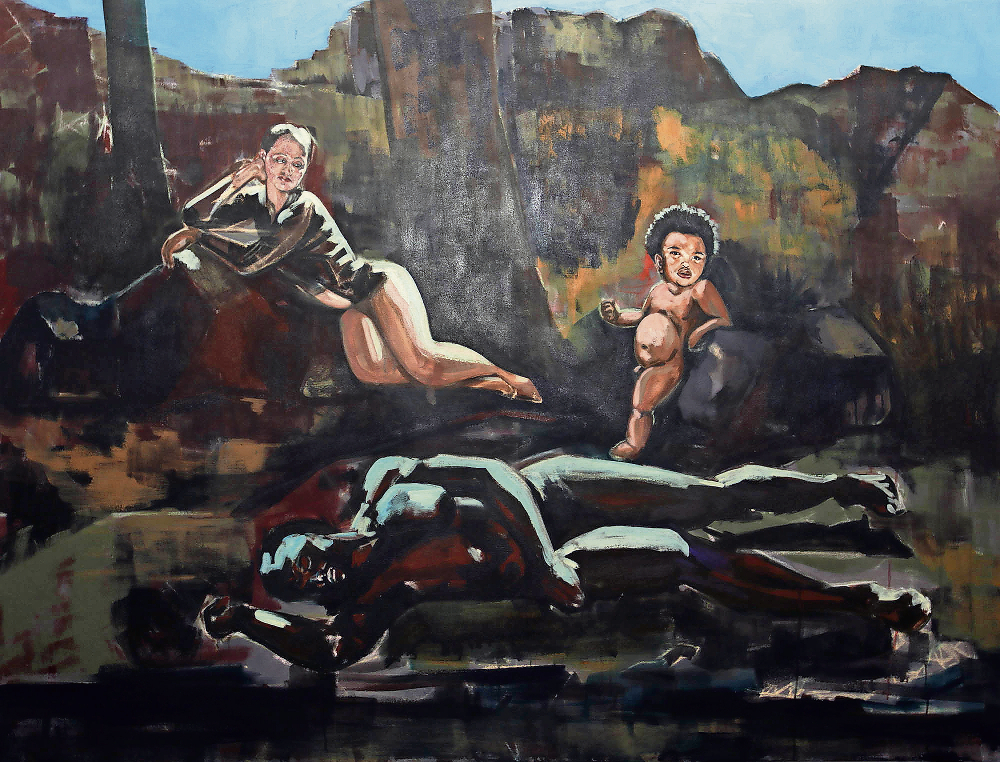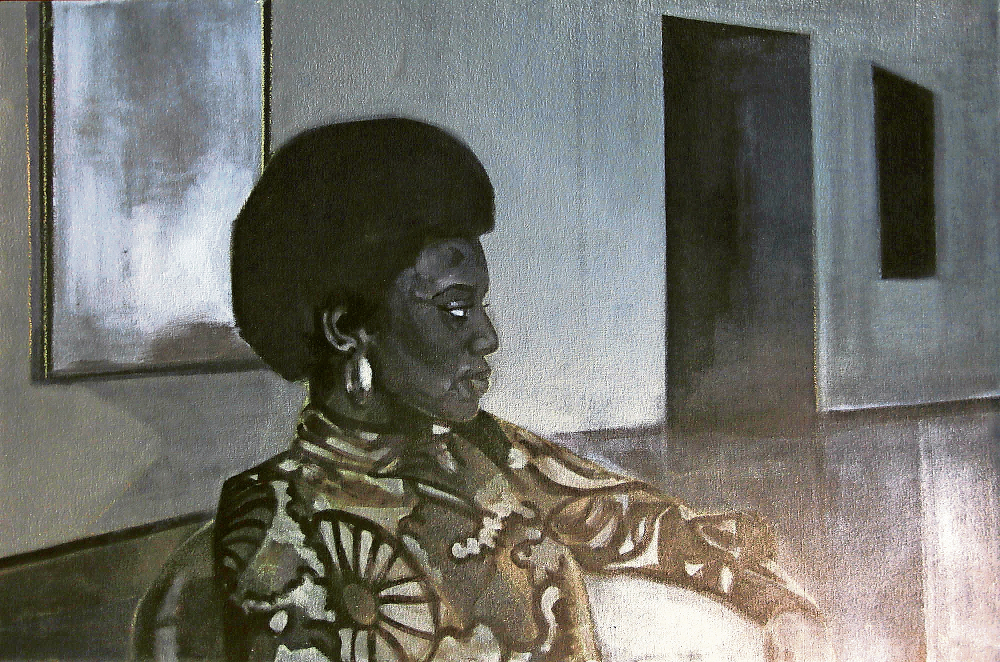Raél Jero Salley's work depicts people as he sees them.
‘Art is my passion; it has the capacity to let people see the world differently and it’s one way for us to imagine freedom … whatever that means,” Raél Jero Salley says a week ahead of his solo exhibition at Gallery Momo in Johannesburg.
In Present he examines the relationship between art and freedom and explores the representation of black people in relation to Western society. Salley says Present, which is made up mainly of painting and several sculptural objects, is a continuation of thinking related to his 2013 exhibition Promise.
The artist was born in the United States, has a doctorate from the University of Chicago and is now a senior lecturer in painting and art history at University of Cape Town’s Michaelis School of Fine Art.
He says of his art in relation to his new home in South Africa: “One of the reasons that I’m so excited to be here – I’ve been here for half a decade and I’m a permanent resident here – is in part because there is such a rich history.
“Not in an abstract sense but in a real, material one: some of the oldest artwork known across the globe comes from this place and some of my artwork in the show refers to that history.”
Salley’s exhibition is curated by Momo’s owner, Monna Mokoena.

I Put a Smile on You
What is the thinking behind the show’s title, Present, and its body of work?
When I say “present”, I think about it in terms of not just time but also in terms of gift and being present. And all those things for me go together.
It took me years of just trying something and not getting it and just working at it over and over to develop this thing that I really love – which is making visual artwork.
And in that practice of doing something again and again, when I developed the show’s concept, I thought about all those past efforts and encouragement that got me to a point where I could travel and do what I love.
The exhibition explores the representation of black people in Western society. Would you share your thoughts on race and identity in the context of Present?
In the show, I’m thinking about the dynamics of art and freedom or creativity and freedom. I was nurtured with this idea that I could do anything, not just because I was my mother’s son, [but] because all of us have an ability to develop and grow. I’ve learnt over time that being black is a feature: I have brown eyes and dark hair; all these things matter in society because other people care about those stuff.
But for me, my job is to do the best I can with what I have. One way of thinking about blackness for me has to do with the kind of struggle in dealing with the circumstances life is presenting you with. If I put on my professor’s hat, I talk about how the historical circumstance has made it very difficult for black people globally because of anti-black racism and how structural inequalities are set up to make it hard for black people to explore the dynamic relationships between creativity and freedom.
So what I think about daily is how do we deal with the circumstances at hand and develop ways of finding freedom for ourselves and others.

Soul Power
On the topic of anti-black racism – it has come to the fore in mainstream media with the recent reporting of the Charleston massacre – would you consider your work as art in protest?
The answer on one level is yes and on another no. For me to make images that have black people in it is unusual and extraordinary if we’re thinking about the full scope of our history. And when I say history, I’m talking about an arc of development from about the late 19th century when art becomes a discipline.
There’s this idea that black people don’t make art because there are fewer black people making art than other people. But human beings have been making visual things ever since they were human beings. So this idea of categorising one thing as art and the other thing as something else is tied up in a long history of ordering the world in a certain way.
And in that longer history, if you look at all the painting – I’ll talk about painting because I love it – there are far fewer images of dark-skinned people and people of African descent than there are of other people. I’m making pictures of people I see every day, people I care about, people who are beautiful and doing the things that people do in life.
On one hand that could be a kind of activism but for me this is just how I see the world.
When did you start creating this body of work?
I’ve been thinking about these ideas for a long time. As I was making work for Promise I was thinking about this show. Even though the themes are different, they relate to how we understand ourselves as being in a present moment. In fact, as soon as I say this is the present it’s already gone.
That kind of abstract way of thinking of things is fascinating to me, because I remember that everything we know to be fact or belief comes from past experience or what we’ve learned, and everything else we’re imagining.
If we all have this ability to create, imagine and think about what will happen next, then we can achieve what we wish to, whether that be overcoming anti-black racism, xenophobia or structural inequality.
Present is at Gallery Momo in Parktown North, Johannesburg, until August 3